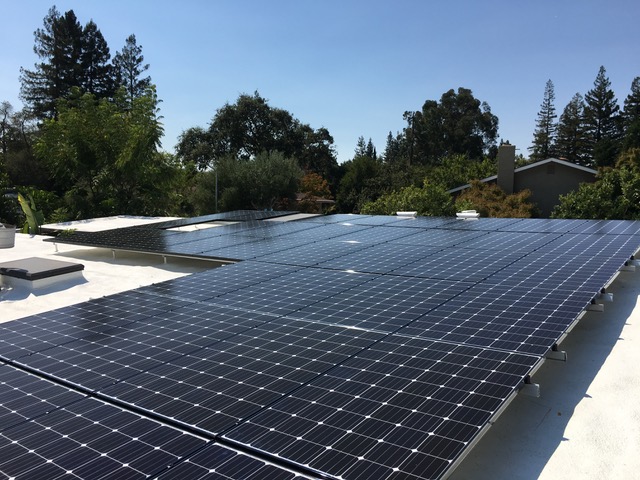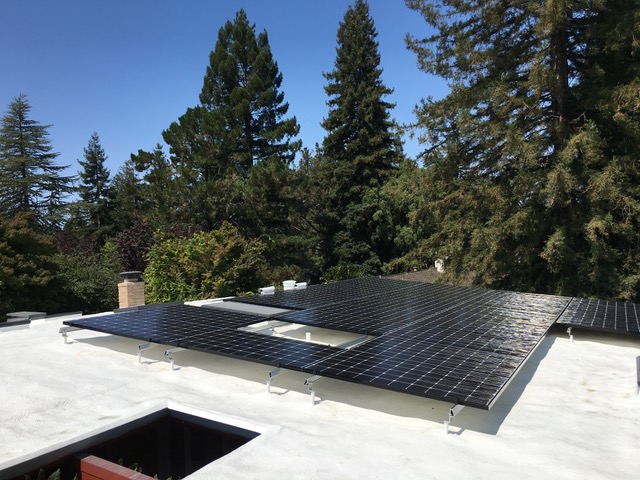Guest Blog: Modern Architecture and Design Society (MA+DS)
Growing up, modern to many of us meant “The Jetsons” and the fantasy tech of the jet age. Today, we’ve achieved video calls, personal communications devices and even robots that clean your house! (Alas, flying cars have yet to make an appearance, but we can still dream.) But “the future” of solar power started even further back. In fact, in 1923 when solar power plants were part of popular culture, the first solar cell, made from selenium on a gold wafer, was already 40 years old.
Today, even if some people still think of solar power as future tech, the reality is that solar power has been viable for quite a while, and it’s just getting better. And, contrary to what you might think, while solar is right at home in places like Arizona, Nevada, and even California, it can still be effective even in the cooler, cloudier climate of the Pacific Northwest.

A Quick History of Solar
If you did some quick math above, you know that the first solar cell was created in 1883, but even that first invention was based on a discovery from 1839, when French physicist Edmond Becquerel discovered that when material is exposed to light, voltage is produced, creating the basis for solar power as we know it today.
Then, in 1897, Frank Shuman built a small solar-powered steam engine, and over the next 15 years developed and refined his application, resulting, in 1912, in the world’s first solar-powered thermal power station, which powered irrigation troughs drawing water from the Nile to the surrounding cotton fields of Maadi, Egypt. Four years later, in 1916, the visionary Shuman was quoted in the New York Times, saying, “We have proved the commercial profit of sun power in the tropics and have more particularly proved that after our stores of oil and coal are exhausted the human race can receive unlimited power from the rays of the sun.” Throughout the 20th century, these fundamental ideas were developed, refined and improved (the first commercial solar cell system hit the market in 1955 – at a modern equivalent of $5,000,000!) , but, perhaps ironically, Shuman’s 1916 quote seems almost as timely today as it was in 1916, and although the history of the 20th century is, in many ways, a history of oil and energy development, renewable energy is perhaps better positioned now than it ever has to be, finally, the next great revolution in energy production.

Solar Today
Today, renewable energy powers millions of homes throughout the United States, and in some nations like Germany, renewables account for almost 40% of total energy production, with solar accounting for almost 7% of that national total as of 2016.
Jarom Fariente is CEO if of the Dura-Foam Roofing and Solar Center, specializing in retrofitting solar power to modern homes in central and northern California, and we asked him about the state of residential solar.
“Solar panels have become highly efficient and reliable in the last ten years at a fraction of the cost. It’s been exciting to see a clean energy industry mature in such a short time! While crystalline silicon solar cells have matured, continued advancements in power electronics have allowed inverters to draw more power from rooftop solar. Issues arising from partially shaded solar arrays are becoming a thing of the past.” What this means for you is that solar is more efficient, more affordable and perhaps most important, more usable, than ever before, even in areas where traditionally solar might not be a first (or even third) option.
What about the Pacific Northwest? It rains all the time.
It may seem intuitive that solar is only suited for bright, sunny areas like the American southwest, where intense desert sun is the norm. However, Renewable Northwest, a leading renewable energy advocate, says that’s not necessarily the case. According to their website, “…there are no “bad” solar sites—even the rainiest parts of the Northwest receive almost half as much solar energy as the deserts of California and Arizona, and they receive more than Germany, which has made itself a solar energy leader.” Further, according to Fariente, “Increasing integration with energy storage is on the horizon. As was the case with PV (photovoltaic) solar, we will see energy storage prices continue to decrease as the industry matures.”
What that means is that one the days when the sun is shining, homeowners have more options than ever before to capture, store and save that power for a rainy day – literally!
So where is solar today? With the wide, flat roofs common to both contemporary modern and retro-inspired mid-century design, and ever increasing efficiency that can make power from less light than ever before, it’s safe to say that the future is bright, indeed.
The Modern Architecture + Design Society produces architecture and design events across North America.